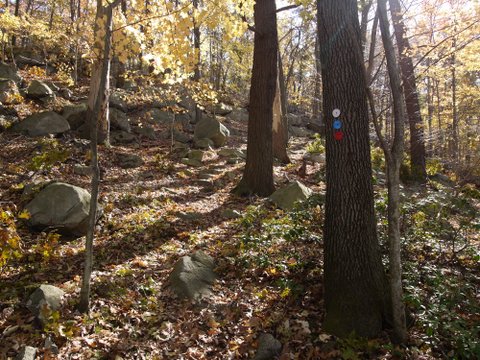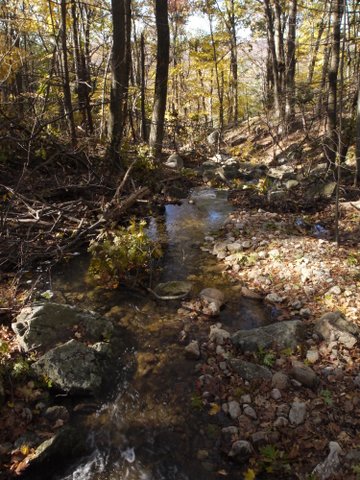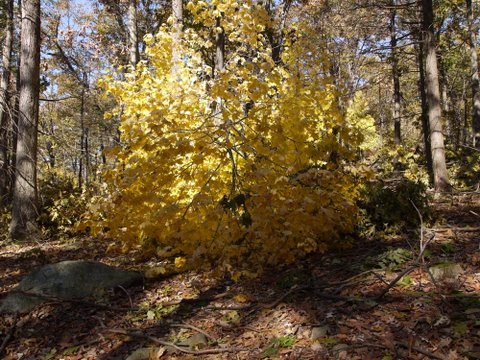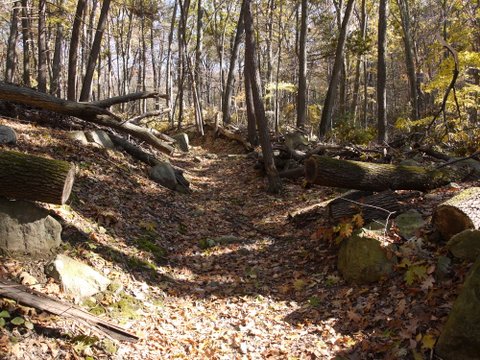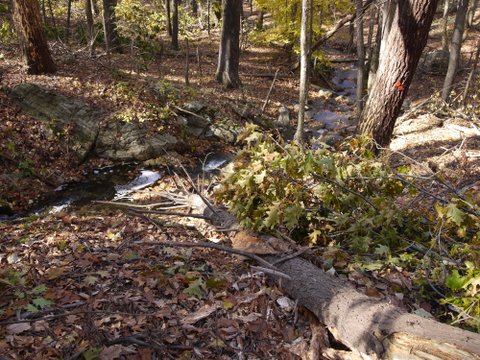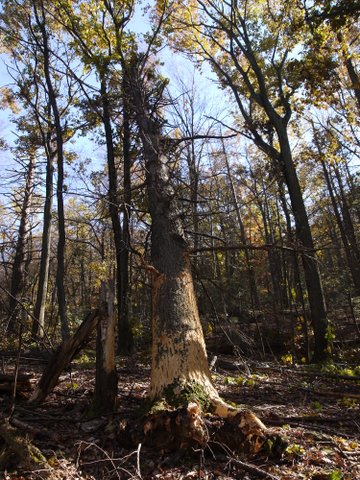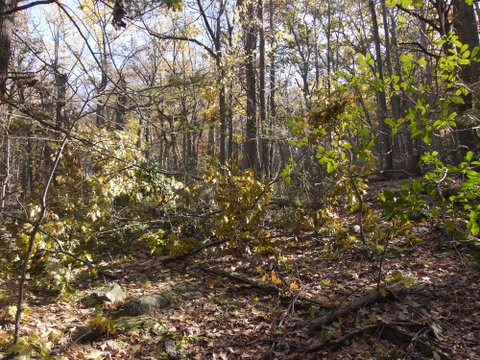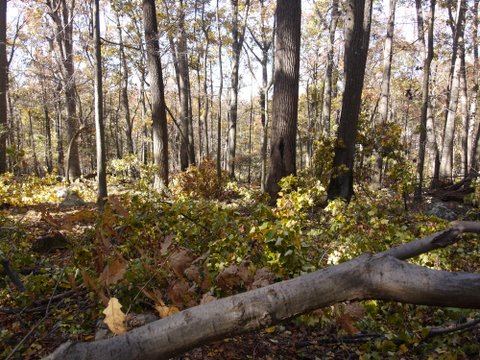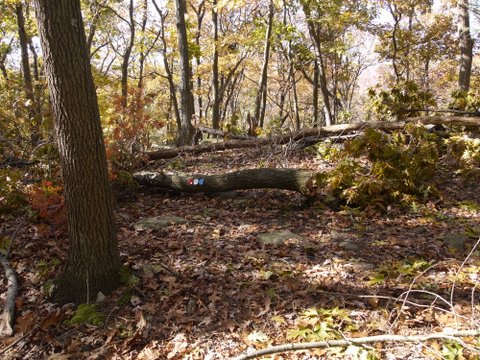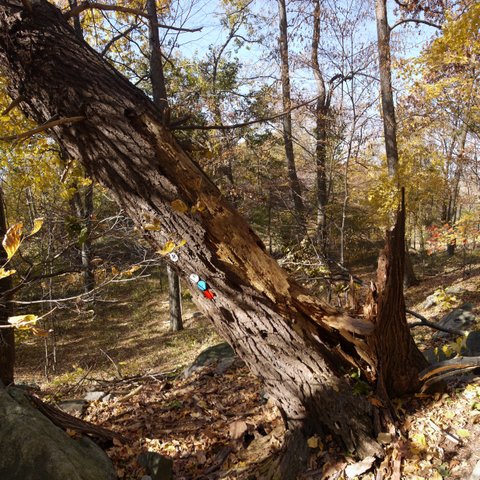My goal this week was to hike along the Appalachian Trail near the Bear Mountain Bridge. I decided to park at Manitoga and hike through their trails to reach the AT. Manitoga was the estate of the industrial designer Russel Wright. It has 4 miles of trails.
My car was the only one in the parking lot. It appears that house and landscape tours are only offered May through October, though as far as I know, the property remains open throughout the year for hiking. The parking lot was not marked, and I didn’t even know whether to park north-south or east-west. I guess when you’re the first car in an unmarked lot, you can set the rules.
I didn’t think that it was all that obvious to find the start of the trails, but I finally walked across a muddy field (“Mary’s Meadow”) and found the trailhead, which led uphill on a series of stones placed as steps. As with every set of trails I can think of, the trails are blazed for travel in both directions (i.e., typically a tree will have a blaze on one side for those hiking in one direction, and a blaze on the opposite side for those hiking in the opposite direction). However, a note indicated that the trails were aesthetically placed and designed for travel in the clockwise direction. If one wanted to go counterclockwise, he would find the blazes had a black circle in the center of them, to show that he’s going in the wrong/non-preferable direction. [I think that even if the trail designer intends a trail to be traveled in only one direction, for safety the trail needs to be blazed in both directions, in case one needs to backtrack if a trail is blocked, if someone is sick or injured, if there’s not enough time left to complete the hike as the designer intended, etc. In addition, many times I have passed one blaze without immediately seeing the next blaze and without being certain of the direction of the trail, and I have looked back to see the blazes on the trees that I have already passed, which help me to line up the direction in which I should continue to travel.]
The land was pretty, with a stream flowing through it.
Unfortunately, I soon discovered that there were many downed trees, limbs and branches, which made hiking very difficult.
In some places, trees had fallen a while ago and the path had been cleared by chainsaw.
However, in other places, there were trees that had just fallen down in the snowstorm of eight days earlier, and they had not been cleared. There were also downed trees that had been dead quite a while, and in those cases it’s hard to tell when they fell. It could be that these trails were never cleared after Hurricane Irene came through in August.
Here a large tree has fallen, only to be caught by a much smaller tree. It should probably be taken down, for safety.
Branches block the trail.
More branches and limbs:
In addition to the trails being blocked by fallen trees, it was hard to find the trails at times because of the heavy leaf cover. Also, some of the blazes were on trees that had fallen, which also made it harder to follow the path.
After about 1-1/2 hours, I gave up, as it wasn’t fun constantly detouring or climbing over downed trees. I never made it to the Appalachian Trail that day, so I don’t know what shape it was in.
Manitoga looks like a nice place to revisit someday, but it’ll be a big effort to clear its trails.

